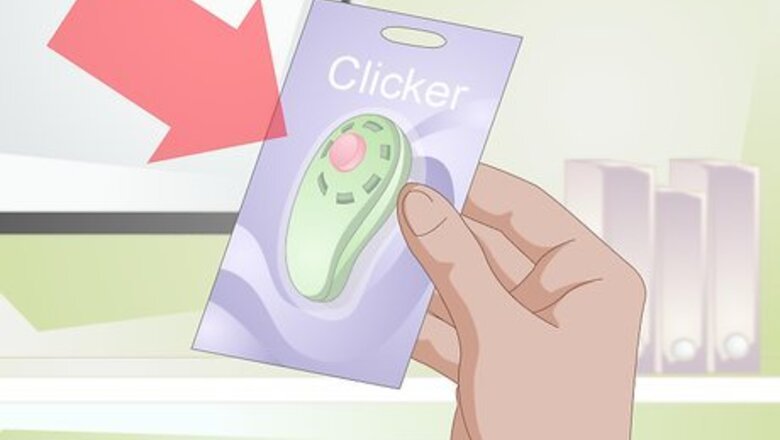
views
X
Research source
Feline Behavior: a Guide for Veterinarians. Bonnie Beaver. Publisher: Saunders.
One of the simpler tricks for a cat to learn is giving a handshake.
Teaching Your Cat to Respond to a Clicker

Obtain a clicker. A clicker is a small plastic box that contains a strip of stiff metal. When pressed, the metal makes a distinctive "click-clack" noise. Clickers can be obtained in most pet stores. The theory behind clicker training is that the cat will learn to link a sound (click-clack) with a reward (tasty treat). The nice thing about a clicker is that it is a distinct sound which is only associated with a reward. Thus, the cat is much more likely to respond. Although you can train a cat using just words, it can be more difficult. Because you use words in everyday speech not directed at your cat, the cat probably won't pay a lot of attention to them. Furthermore, if you use a command word such as "shake," the cat will likely hear the word in other contexts and not know when it is expected to respond.

Find a treat your cat enjoys. Cats can be picky eaters, and a treat that one cat enjoys may be of little interest to another. Training will go faster and more easily if you determine in advance what kinds of treats your cat enjoys most. You may want to try buying a small amount of several different cat treats to try them out and see what your cat likes best.

Pick a training time. The ideal time for a clicker session is when the cat is relaxed but not asleep, and sitting near you. You can start any time when the cat is paying attention. If your cat has just woken up, it may be groggy. If this is the case, give the cat five minutes or so before you begin training.

Train with the clicker. Once the cat looks alert, press the clicker and give it a treat. Repeat this several times over a period of about five minutes. Cats only have a short attention span, so don't try to continue your clicker session beyond about five minutes.
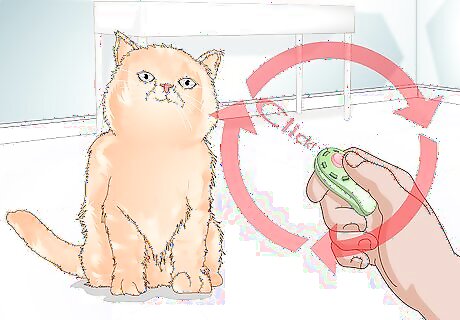
Repeat the session. Later in the day, or the next day, do another clicker session. Continue repeating these sessions regularly until your cat associates the sound of the clicker with a treat. Each cat learns at a different pace, but most will figure out the link between the clicker and the treat after two or three five-minute sessions. Be consistent, repeating the clicker session once or twice a day, every day, until the cat makes the association. You will be able to recognize when your cat has discovered the connection, because it will gaze at you expectantly and perhaps lick its lips after your press the clicker.
Training Your Cat to Shake
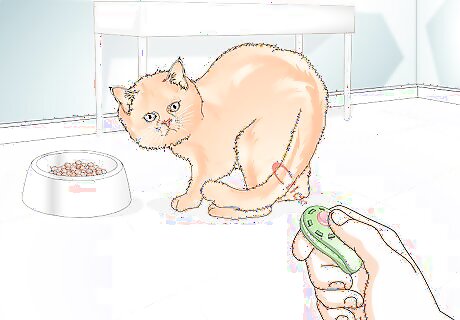
Choose a time and place to train your cat. Once your cat has linked the clicker and a treat, pick a time when it is attentive but relaxed. Just before you would normally feed your cat is a particularly good time, because the promise of treats to a hungry cat will sharpen its responses. Work in a peaceful place with few distractions so that the cat concentrates solely on you.
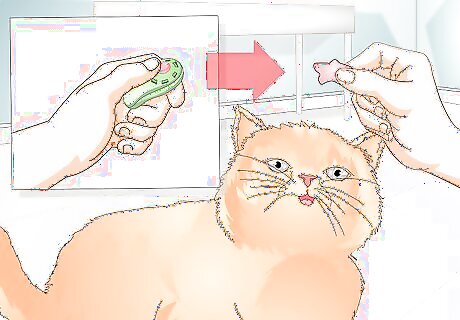
Click and reward. Press your clicker and give the cat a treat to remind it of the connection between the clicker and the food.

Take your cat's paw. Gently lift one of your cat's front paws. It's a good idea to lift the same paw every time. The cat will learn the trick more easily if you are consistent.
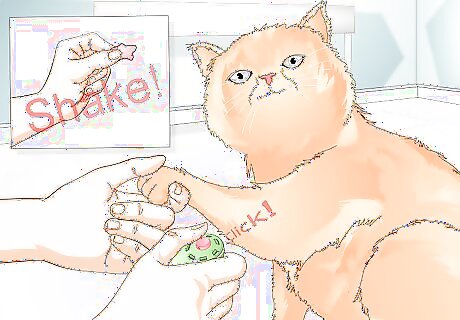
Click, command, and treat. While holding the paw in your hand, press your clicker with the other hand, and then give your chosen command-word for the trick, such as "shake." Then give the cat a treat.
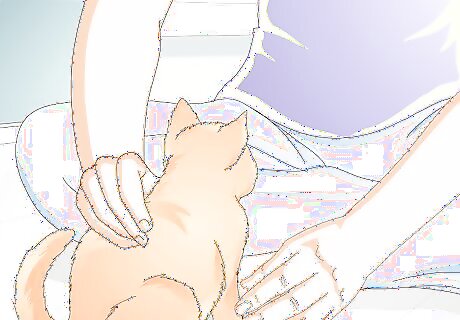
Release the paw and pet the cat. Release the cat's paw and give it a couple of nice pets. This further reinforces that you are pleased with the cat's behavior, and makes the training experience more pleasurable for the cat.
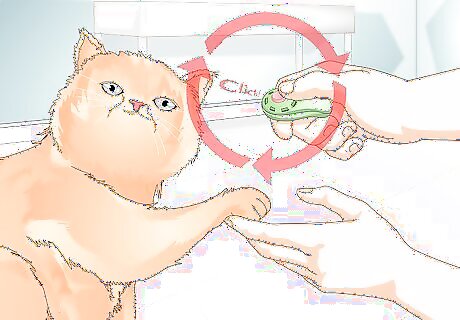
Repeat the process. Repeat this cycle as many times as the cat is willing during a period of about five minutes. If the cat spontaneously lifts the correct paw at any time during the training, immediately click, say the command and reward. This sends a strong message that the behavior you require is to lift the paw. You want your cat to enjoy these sessions. If the cat seems uncooperative or disinterested, don't force this issue. Let it wander off and try again another other time.

Wait, then repeat. Later in the day, or the next day, repeat the entire process. Lift the cat's paw if it fails to do so on its own, and also immediately click and offer a treat when the cat does it spontaneously. It may take several sessions before your cat starts to raise its paw without you taking it first, and several more before it will do it on command.
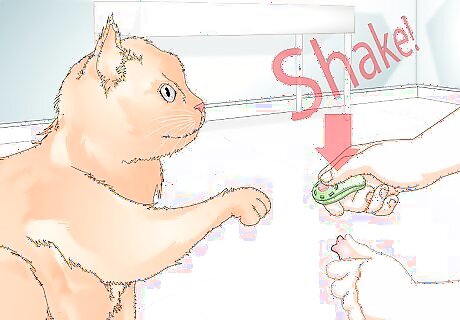
Command before the click. When the cat starts to frequently lift its paw on its own, try giving the command "shake" without the click. When it places the paw in your hand, then click and reward. The click promises a reward, and the command tells the cat the required action to get it. Your goal is to get the cat to respond to "shake" without the click because it associates the command with a treat.
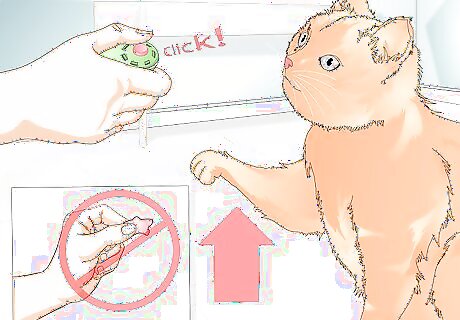
Reduce the treats over time. Eventually, it will become unnecessary to give a reward each time the trick is performed. However, do reward the cat at least every three to four times so it doesn't get disheartened. Always conclude each session with a treat. Ending the session with a treat gives the cat consistent, positive reinforcement of the desired behavior.


















Comments
0 comment